Orange, CA Pollen and Allergy Report for Summer 2023
Pollen Allergy Trends in Orange, CA
When is pollen lowest in Orange, CA?

February
Lowest month total PPM
Avg. PPM
When is pollen highest in Orange, CA?

January
Highest month total PPM
Avg. PPM
How does pollen in Orange, CA compare to California?
Orange has a lower average PPM than the state of California.
Orange yearly avg PPM:
California yearly avg PPM:
How does pollen in Orange, CA compare to the USA?
Orange has a lower average PPM than the USA.
Orange yearly avg PPM:
USA yearly avg PPM:
Is pollen worse this year in Orange, CA?
Spring 2023 was about the same as 2022.
Spring 2023 PPM:
Spring 2022 PPM:
Average PPM in Orange, CA
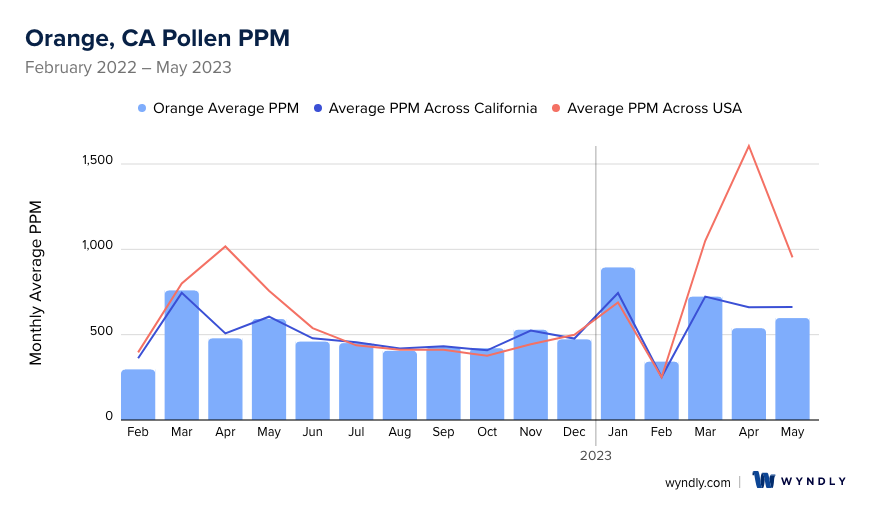
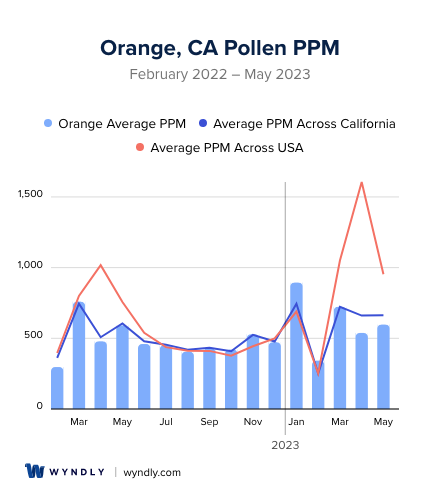
Orange, CA Pollen and Allergy Breakdown by Month
Grass
When is grass pollen highest in Orange, CA?
May has the highest grass pollen in Orange, CA with an average PPM of
When is grass pollen lowest in Orange, CA?
December has the lowest grass pollen in Orange, CA with an average PPM of
Tree
When is tree pollen highest in Orange, CA?
March has the highest tree pollen in Orange, CA with an average PPM of
When is tree pollen lowest in Orange, CA?
August has the lowest tree pollen in Orange, CA with an average PPM of
Weed
When is weed pollen highest in Orange, CA?
November has the highest weed pollen in Orange, CA with an average PPM of
When is weed pollen lowest in Orange, CA?
February has the lowest weed pollen in Orange, CA with an average PPM of
Orange, CA Pollen Monthly Breakdown by Pollen Type
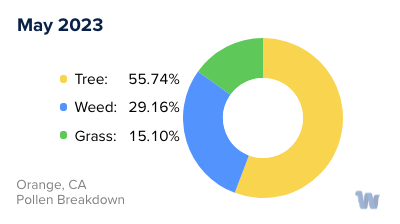
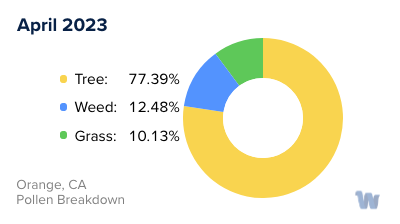
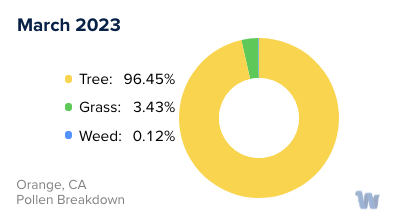
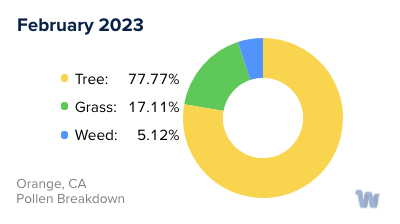
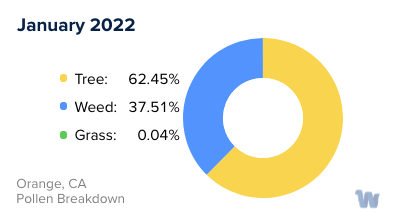
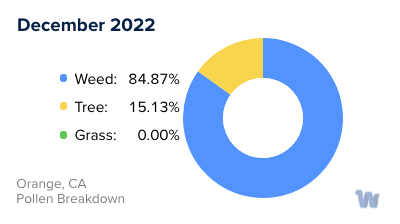
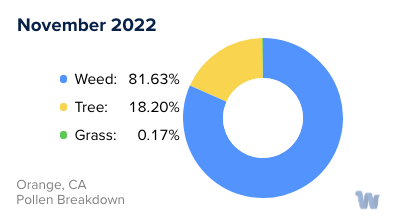
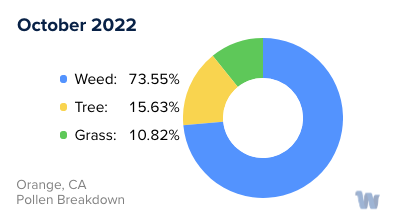
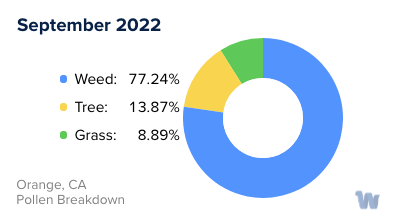
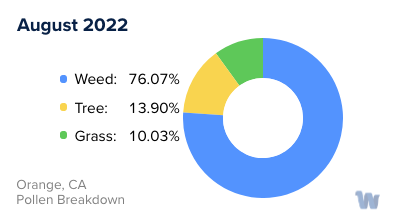
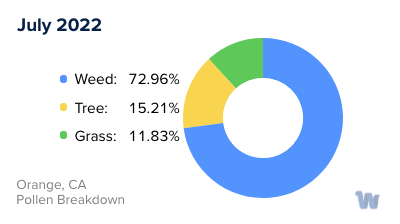
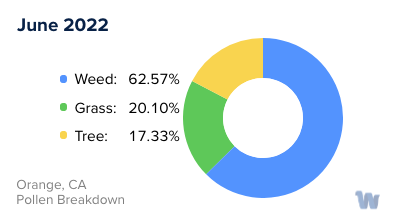
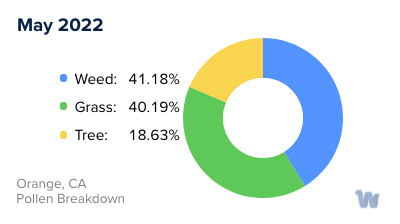
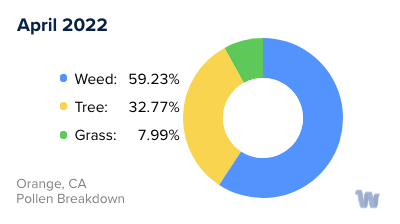
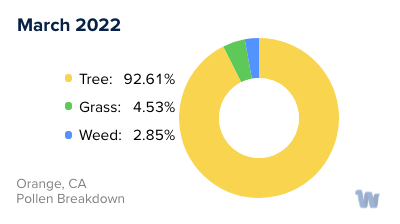
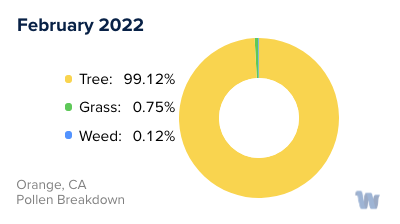
Pollen and Hay Fever in Orange, CA
In the sunny landscape of Orange, California, residents enjoy an abundance of natural beauty, but with it comes an unseen challenge: pollen allergies, often referred to as hay fever. This condition can affect people throughout the year, but it becomes especially prevalent during certain seasons when specific plants release their pollen.
The primary culprits for pollen allergies in Orange are trees, grasses, and weeds. Each group has its own blooming season, which contributes to the "pollen calendar" that allergy sufferers must navigate.
Beginning in late winter and into early spring, trees are the first to release their pollen. Common types in Orange include oak, pine, and olive trees. Each tree species has a unique pollination period and the mild California climate encourages a variety of trees, making this season a significant time for pollen allergies.
Following the tree pollen season, grasses take center stage. From late spring to early summer, grass pollen fills the air. Bermuda grass, ryegrass, and Kentucky bluegrass are common in this region and are known for their high pollen production. Mowing lawns and warm, windy days can stir up these tiny particles, making grass pollen season a peak time for hay fever symptoms.
As summer transitions into fall, weed pollen emerges as the primary allergen. Ragweed, sagebrush, and lamb's quarters are common in Orange and can release significant amounts of pollen. Weed pollen can travel great distances, so even if these plants are not in your immediate vicinity, their pollen can still affect you.
In Orange, California, pollen allergies can indeed pose a year-round challenge. The diverse plant life in this region ensures that at almost any time of year, some type of pollen is in the air. Understanding the pollen calendar can help residents anticipate when they might experience symptoms and can guide them in adjusting their outdoor activities to minimize exposure.
So, while the natural beauty of Orange is undeniable, it's important to remember the invisible world of pollen that accompanies it. Whether from tree, grass, or weed, these minute particles form an integral part of the city's environmental rhythm, affecting the lives of its residents in significant ways.

